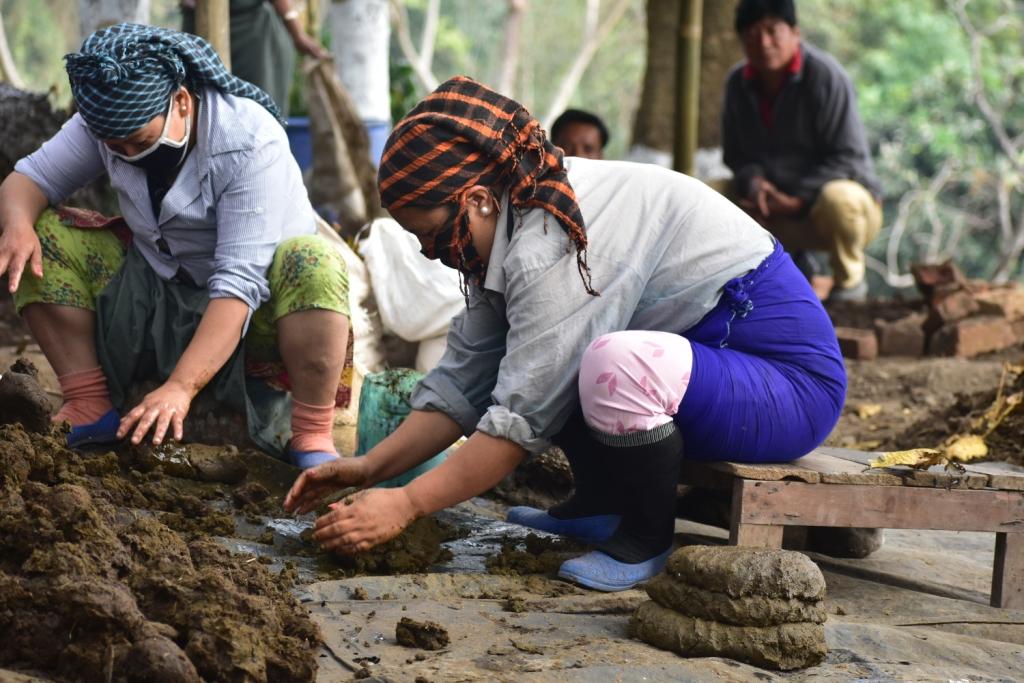Tea estates in India span three predominant geographical locations: Assam, Darjeeling and the Dooars, encompassing thousands of hectares. Given that global warming is increasing, tea estates have a pivotal role in conserving biodiversity. It is estimated that 70% of tea lands in India are on the periphery of forests, as a result of which plantations play host to a unique ecosystem which embraces both the elephant and the earthworm.
In Assam, Dooars and the low-lying areas of Darjeeling, elephants regard tea estates as an extension of their forest habitat – these have been, and remain, a migratory route for these majestic creatures. Elephants passing through tea estates will often rest, forage opportunistically, find watering holes, and at times even give birth. In the past this would often lead to human”elephant conflict (HEC), giving rise to casualties on both sides, as elephants don’t like any obstruction in their path. Realising this to be a cause of conflict and desperately in need of a way to ensure peaceful coexistence, buffer zones were created to give elephants safe passage with limited destruction to the plantations.
 As part of a new initiative, tea growers can opt to sell under the label Certified Elephant-Friendly Tea. This is a sign of assurance that they meet the standards of the US-based Wildlife Friendly Enterprise Network and the University of Montana’s science-backed standards which serve as a plan of action for tea growers who are conscious of the impact of their actions on Asian elephants.
As part of a new initiative, tea growers can opt to sell under the label Certified Elephant-Friendly Tea. This is a sign of assurance that they meet the standards of the US-based Wildlife Friendly Enterprise Network and the University of Montana’s science-backed standards which serve as a plan of action for tea growers who are conscious of the impact of their actions on Asian elephants.
The growing number of tea estates that are working towards being certified organic has given further impetus to biodiversity conservation. Organic agriculture sustains microorganisms in the soil, flora, fauna, and the people. Best practices such as biodynamic processes and permaculture methods provide a holistic approach to biome conservation on tea estates. These processes ensure that you put more in than you take out, and that biotic and abiotic components work together to create a thriving environment. The ecological harmony on the garden is often reflected in the taste of the teas.
Some tea estates have taken initiatives up a notch to offer ecotourism where visitors can partake in eco walks along nature trails, where they can observe unique species of butterflies and birds in their natural habitats. Conserving habitats and ecosystems can reduce the disastrous impacts of climate change and it is imperative that every industry does its part. Projects and practices that reduce the vulnerability of biodiversity to the effects of global warming are the need of the hour, hence it can be said with reasonable surety that tea estates are leading the way.
A note on organic-versus-biodynamic agriculture
 Organic farming is the process of growing food without the use of artificial fertilisers and synthetic chemicals. The objective is to grow food that is high in nutritional value and also grows in optimal quantities. The use of growth promoters and genetically modified seeds is completely ignored in organic farming. This method of farming stresses on the necessity to maintain adequate land management and endeavours to maintain the delicate balance between animal life, the natural environment and crops. Organic farmers shun the use of pesticides and herbicides. The produce that is achieved through organic farming is at its most natural form.
Organic farming is the process of growing food without the use of artificial fertilisers and synthetic chemicals. The objective is to grow food that is high in nutritional value and also grows in optimal quantities. The use of growth promoters and genetically modified seeds is completely ignored in organic farming. This method of farming stresses on the necessity to maintain adequate land management and endeavours to maintain the delicate balance between animal life, the natural environment and crops. Organic farmers shun the use of pesticides and herbicides. The produce that is achieved through organic farming is at its most natural form.
Biodynamic farming and organic farming are very similar but biodynamic goes a few steps further – it is an integrated practice where all components on a farm are believed to be living, interrelated systems, including animals, plants and the cosmos. Biodynamic practices are aimed at growing healthier plants and rejuvenating the earth by reenergising the soil and adding essential nutrients to the plant, soil and animals.
Biodynamic farming practices stimulate the soil through careful monitoring of nature’s rhythms. The primary difference between organic and biodynamic is that biodynamic farming uses principles that add life force to the plant, soil and livestock, whereas in traditional farming methods the soil quality typically deteriorates. Biodynamic agriculture uses specific preparations made from minerals and herbs. These preparations are used to strengthen the compost applied to the fields and heighten the microbial activity in the soil, resulting in better root activity and overall improved photosynthesis.
Biodynamic agriculture also embodies astrological forces. Rudolf Steiner, the founder of biodynamics, opined that much like the moon affects the tides, it also affects the phases of planting and harvesting.
The biodynamic planting calendar differs from the conventional harvesting calendar. The biodynamic calendar is all about rhythms: cosmic, solar, moon rhythms and earthly rhythms. These are the rhythms that are believed to sustain all living beings. Biodynamic farmers endeavour to reinvigorate the soil, so that the food produced from this living soil has enhanced vitality and nutrition, therefore bettering the quality of human life. This can be accomplished when the rhythms of biodynamic farming activities are aligned with cosmic and earthly rhythms, human life, as well as animal and plant life.
So, while the consumption of organic food is preferable in order to avoid toxic contaminants such as pesticides, even organic food lacks vital nutrients if grown in nutrient-devoid soil. Regenerative farming methods are not addressed by organic farming and this is what makes biodynamic farming so indispensable.

Rudra Chatterjee is managing director, Luxmi Group
